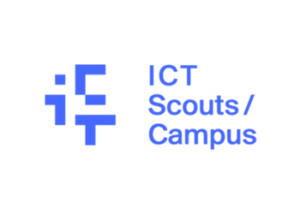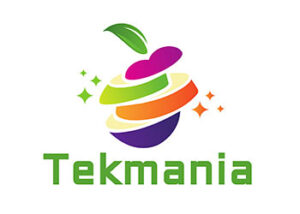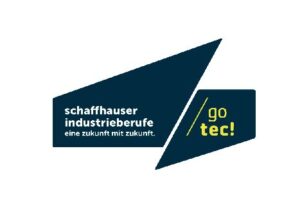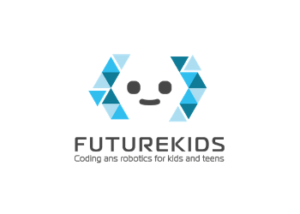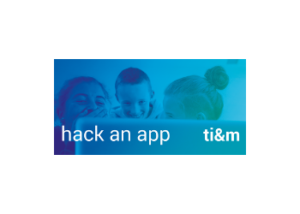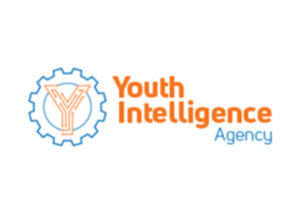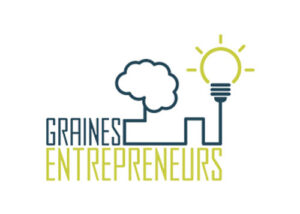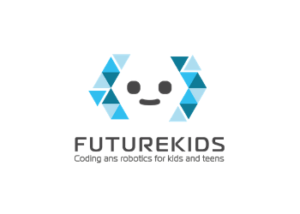digitalswitzerland, University of St Gallen Business School and SIX co-organised an MBA competition on fintech and digital exchanges, as part of our commitment to lifelong learning, in which 12 teams competed for the first place. MBAs have traditionally been considered highly valuable in a career path. In today’s world, an MBA is no longer enough; employees need to reskill and upskill throughout their lives. So how does that impact tertiary and executive education?
According to Forbes,“for the most part, today’s business schools are busy teaching and researching 20th century management principles and, in effect, leading the parade towards yesterday.” This is important for the discussion on the value of MBAs. As Forbes writes, companies today are “focused on continuous innovation for customers and organized to be nimble, adaptable, and able to adjust on the fly to meet the shifting whims of a marketplace driven by end-users.” This is not aligned with what MBA courses teach and new management and business practice require “a different mindset with counterintuitive ideas that fly in the face of the assumptions of a ‘good’ 20th century manager or the typical business school case.”
Almost a decade ago, The Economist wrote a long paper on whether PhDs were still appropriate in an ever changing job market where a solid skillset is required. PhDs are still a requirement for academic careers, but what about the rest of the labour market? Peter Fiske commented in Nature that short courses, which abound on and offline, often fulfil specific skills training better than the lengthy and in-depth study for a PhD thesis. For scientific PhDs, doctoral candidates should be able to split and analyse data. According to the Swiss government, “the fact that the number of students and doctoral students is increasing year after year demonstrates the great attraction of the ETH Domain (2017: +3.1%). The biggest increase in the number of students in 2017 was registered in IT (+7.5%) and engineering sciences (+4.1%).” The Adecco Group’s skills shortage report still ranks engineers at the top of missing professionals.
The rise of online and mobile short, skill-focused trainings, has prompted a discussion on the validation of certifications delivered by some of these institutions. According to Huffington Post contributor Tom Laurinavicius writing in 2016: “Today, online certifications like the PMP, CBAP, Lean Six Sigma, etc, carry more value and credibility than a university degree, even.” The reason is simple: “Conventional education – university programs, college degrees, vocational training- aren’t designed to cope with the changing needs of industry, while online certifications are devised specifically with this end objective in mind.” Lifelong learning has also adopted agility in its approach to training.
In Switzerland, certification is important to both employers and employees, still cast in a 20th century mindset. The website orientation.ch advises that “continuous training also exists. It encourages personal and/or professional development (e.g. language courses, computer courses, for the use of specific tools, etc.).” And concludes that even those courses deliver a certificate. Yet many employees learn valuable hard and soft skills on the job. According to the European Centre for the Development of Vocational Training (CEDEFOP) “challenging tasks, which involve decision-making, problem solving, judgement, peer learning and applying new knowledge, reflect the breadth and diversity of learning in the workplace.“ Further, “seen from the perspective of individuals, flexible routes and recognition are key to encouraging them to take up learning. They need to see clear benefits. The knowledge, skills and competence they acquire need to have a real value: a better or a new job, the opportunity to pursue further learning without having to start from scratch, the chance to combine their qualifications with complementary skills within a similar or different study field.” Swiss employers would perhaps find more skills in the marketplace if they took into consideration such elements.
To remain informed on what digitalswitzerland does, remember to sign up to our newsletter!
The digitalswitzerland «nextgeneration» initiative supports digital education offerings primarily for children and adolescents to foster curiosity and build fundamental skills early in life. Our role is to connect these existing platforms and provide reach and publicity via our channels and network. There are offerings in all language regions of Switzerland.
The generation of tomorrow, the talents and shapers of the future are central to Switzerland. For this reason, digitalswitzerland is committed to concrete projects to teach digital skills. On this page, you will find activities and camps for children and young people aged 5 to 19 as well as for adults, distributed throughout Switzerland, to immerse themselves in the fascination of the digital world.
The Swiss 2014 law called WeBIG, which came into effect in 2017, defined lifelong learning as a personal responsibility and set the framework to finance lifelong learning within strict parameters. Within this framework, the State Secretariat for Education, Research and Innovation (SEFRI) may grant financial assistance to organisations active in the field of lifelong education or conclude service agreements with these organisations for information and coordination, quality assurance and for the development of continuing training. The most recent figures mention CHF 5.3 billion spent on lifelong learning in Switzerland, most of which was disbursed by private enterprise and individuals.
At the digital#lifelonglearning event co-organised by digitalswitzerland and FSEA/SVEB, many of the presentations converged on one key message: to paraphrase Spiderman’s famous “with great power comes great responsibility”, with great changes come great learnings. As society evolves and the revolution 4.0 changes paradigms, behaviours and interactions, people will need to adapt to manage their relationship with technology and the new demands it creates. The question becomes do you want to submit to technology or do you want to manage technology in your life and career?
We live in an increasingly individualised world, captivated by screens. It is each of our responsibility to train and learn lifelong. That is a bit simplistic. While the online offer is broad, some people use these opportunities and others don’t, even though much of the trainings are free. Has free training lost its value in an ultra-liberal world? Have people not realised that ongoing training and learning is an imperative to remain employable? Is the decreasing income of the middle classes resulting in a focus on what is perceived as essential versus “nice to have” like continuing education? Are employers not engaged enough in the dialogue to convince employees that lifelong learning is essential?
Currently employers and employees bear the brunt of the financial load of lifelong education in Switzerland. Employers pay in direct and indirect ways: by paying for the training and giving time off to learn, providing equipment and space. At the session on lifelong learning at the Salesforce Basecamp, panelists debated on how much time should be devoted to lifelong learning. Many argue that learning should be embedded in a weekly practice, in one form or another, online or offline. Questions from the audience were about how to know what trainings to plan or how to convince employers to hire the over 50s. The discussion continues and the more people join, the greater the chance to embed lifelong learning in our culture!
All the companies in digitalswitzerland’s Top Talent interviews and survey believe that lifelong learning is a critical success factor. According to the interviewees, as skills requirements change in the course of digitalisation, talents need to invest in learning skills and leadership.
The continuing education and adult training market in Switzerland is heterogeneous and mostly funded and organised privately. The first national law which regulates continuing education and training as a legal framework came into force in 2017 and regulates the entire non-formal continuing education and training sector. Even though this law exists, funding does not cover all the needs, notably of private persons who seek to reskill. While the regional placement offices may offer some requalification support, lifelong education goes beyond requalification; it is the will to learn and upskill continuously.
According to Mercer’s Global Career Trends report, “Organisations are in a new “Learn or die” environment where everyone must accelerate their learning to remain relevant.” Technology has facilitated access to learning opportunities, whether external or in-company, through Massive Open Online Courses (MOOCs), Learning Management Systems (LMS) and mobile microlearning. However, it is not enough to learn; employers need to ensure that learners can apply the learning and build new skills.
Shared responsibilities
Respondents to our survey underline the employee’s responsibility to learn continuously and invest in such skills. At the same time, organisations should provide talented employees with a broad set of learning opportunities, ranging from online courses and secondments to business case assessments. Selected talents can also benefit from executive mentorship. Lifelong learning opportunities are perceived as an essential tool for any organisation to attract and retain top talents. To achieve this, some of the respondents suggest the need for a shift in organisational culture: rather than understanding education and learning programmes in terms of workload loss, they should be understood as an investment in the sustainable productivity of their workforce. With the availability of digital learning applications, talent development programmes are tailored according to the individual preferences and competencies of employees.
In the qualitative interviews we heard that employers notices that people stop learning at a certain age, which may indicate that companies stop investing in lifelong learning for older employees. Older employees will need to ensure that they also keep up to date with technologies, trends and practices, to remain employable as long as possible. Interestingly, already in 2006 the Cedefop noted that “for lifelong learning to become a reality for older workers, ordinary workplaces must become primary places of learning.” And furthermore that “a strong learning culture in the workplace makes employees more receptive to change, regardless of age.”
The demographic challenge will affect all walks of life: lifelong learning and training measures that anticipate people’s needs in the different phases of their lives need to be put in place in all workplaces. This calls for cooperation between the actors in the economy – governments, employers, employees, institutions, training providers – all working closely together.
For the second year running digitalswitzerland ran a video competition for all Swiss schools, at all levels. As one of the numerous successful Digital Day activities, schools in three linguistic regions of the country participated in the video competition. The jury judged according to several criteria – technical, creative, originality among others.
The theme for this year was “Play, talk, exercise – what does a playground 4.0 look like?”; students were free to interpret the question as they wanted, within a 90 seconds timeframe. Submissions ranged from drone delivery of school snacks, to drone warfare, to virtual gaming through wifi free playgrounds and cyberbullying.
The video competition stimulates discussion on the implications of digitalisation. There has been a lot of talk of FOMO (fear of missing out) and loneliness due to social media, as people no longer talk among themselves. We see this also in the videos that were submitted, with a playground where children sit around and chat with each other over social networks rather than speak to each other and play becomes something to be questioned. The beauty of the video competition is that students can team up and work on the video as a small project, involving several people or in some cases a whole class.
The primary category first place winner imagined a selection of online and offline activities for their film, illustrated with animated Lego pieces. The second grade class in Igis (GR) underlined the importance of having a wifi free zone, although some activities required QR codes. The video closed with a Scrabble word, showing that board games too are important as social and learning tools, not just online games.
The theme of cyberbullying was the focus of a winning team in the middle school category, in Poschiavo (GR). This is a major concern for parents and children alike. There is no single agreed-upon definition of cyberbullying. The following elements have been identified as common features of cyberbullying: the use of electronic or digital means; the intention to cause harm; a sense of anonymity and lack of accountability of abusers as well as the publicity of actions. The problem with cyberbullying as opposed to real life bullying is that it can go viral, it never stops and neither parents nor child can easily close the door and switch it off.
The use of digital tracking and imprints on the city was the subject of the winning video, in the high school category from the Collège Voltaire in Geneva (GE). The second and third prizes in each category covered different subjects. All the creators who submitted films used filters, cutouts, and lighting very imaginatively.
The videos came in from all over Switzerland, which shows that students today have talent, imagination and drive. They are also thinking about major issues and advantages related to digitalisation. Let’s make sure we keep these discussions alive to keep humans at the centre!
With the increasing application of digital technologies, talented employees are expected to become an even more important component of successful business models. According to digitalswitzerland’s Top Talent study, evidence suggests how in complex occupations, the productivity differences between high and average performers increase dramatically. For example, the impact of talented software engineers, data analysts and creative designers on a company’s success will likely increase with the amount of data it has at its disposal as the result of using digital applications. Technological innovation and talent are therefore connected through a mutually reinforcing relationship: where talent increases the application of technological innovation, those technologies in effect disproportionally contribute to the importance of the highly talented in a company’s success. Digitalisation will change skill requirements as employers seek agility, adaptability, flexibility, ability to learn lifelong and social skills in their top talents. In order to attract this talent, companies need to make their value proposition clear.
A Gallup poll among “star employees” identified some of the important features they look for in a new position:
- the ability to do what they do best
- greater work-life balance and better personal well-being
- a significant increase in income
- the opportunity to work for a company with a great brand or reputation.
The working environment, a culture which allows error, having fun and job variety are also important to top talents.
The talents of today (and tomorrow) are looking for more than income – they are looking for purpose, opportunities to grow and associated career support. Development practices such as training, personal coaching and clear performance feedback are vital tools for companies to meet these demands.
Work-life balance has been a perennial desire in the growth years of the 20th century. What has changed is the weighting given to work-life balance in the 21st century. The overall wellness trend – healthy eating, regular exercising, stress reduction – is affecting the workplace too. Desk research has shown that top talents, amongst others, look for a “greater work-life balance and better personal well-being” when changing position or employer. For top talents, a better work-life balance translates in the possibilities that are offered to “work remotely when they can without compromising work quality or productivity”. This includes flexibility, fairness and wellness.
On a broader level, top talents demand personalised plans that allow them to take time off for executive education or for important moments in their private lives, such as paternity leave. Companies which adhere to the “no pain/no gain” maxim must rethink their positions if they are to remain attractive to the coming workforce. 30% of the current workforce is currently either Gen X or Millennials, with strong work/life balance values; by 2025, Millennials will comprise 75% of the global workforce. Millennials are the largest and most educated workforce in history, one that is digitally native, has grown up to multitask, like to do “work that matters” and working in teams. According to one study, Millennials expect to stay less than 3 years in any one job. like to do “work that matters” and working in teams.
The brand or reputation of the organisation can give employees a feeling of pride and purpose. Top talents want to work for organisations that offer a higher sense of purpose and “whose values are aligned to their own personal values”. Various surveys indicate that for Millennials, the social impact and purpose of an organisation are among the most important decision criteria to choose among different employees.
For Swiss companies to remain competitive in the talent market, they thus need to clearly identify and communicate their value proposition, the promise of what value the company delivers. It goes beyond just a statement however; companies need to walk the talk too. As consumers become more critical, verbal and mobile, so will employees. It is by having a clear value proposition coupled with appropriate organisational behaviours that companies remain attractive to top talents.
Attracting and retaining top talent is a major concern for companies based in Switzerland, particularly in the areas of STEM and ICT, notably in blockchain, artificial intelligence (AI), connected systems and encryption. To address this concern, digitalswitzerland carried out a survey on top talent of the Swiss workplace with the following objectives: identify what new top talent will be needed in the next five years, what must be done to educate and attract these talents, and what investments must be made to educate new talents in Switzerland. The report aggregates existing study results, personal interviews and an online questionnaire. Switzerland will need to address the issue of top talent development, attraction and retention if the country is to remain at the top of international competitive and innovation rankings.
Top talent can be defined as employees who “have greater potential to occupy key leadership positions in the future, are more difficult and more costly to replace, and diminish an organisation’s status when they leave”. Top talents are people who perform better than their peers and possess the ambition to further self-develop. Top talents can quickly process and critically engage with complex information. They have the social and emotional skills to collaborate, communicate and negotiate in a diverse and unpredictable environment. They possess at least a basic understanding of technological innovations in fields such as data analytics and artificial intelligence, which helps them understand the strategic position of their organisation in a rapidly changing business landscape.
Four macro-trends are affecting the work environment: flexibilisation, automation, demographic changes and the changing geo-political landscape. Technological innovations such as online platforms allow people to offer their services to a wider set of potential customers, increasing the opportunity to be successfully self-employed and independent. One consequence of this trend is a growing preference for self-employment. In Switzerland 14.9% of the population is self-employed, higher than the United States at 6.3% and lower than the United Kingdom at 15.4%.
The combined effect of innovations in machine learning and the availability of big data enables the automation of a potentially wide range of non-routine cognitive activities, like driving a car or medical diagnostics. Activities that are unlikely to be automated soon are those that require social and emotional skills, creativity and the ability to improvise. According to a study by Deloitte, roughly 270,000 new jobs will be created by automation in Switzerland by 2025, and the Adecco group forecasts a shortfall of about 500,000 workers.
The world’s population is expected to grow to nearly 10 billion by 2050. The median age of the Swiss population is expected to grow from 42.4 in 2017 to 47.5 in 2050. A declining active workforce puts pressure on the dependency ratio; to sustain current standards of elderly support and pension schemes, societies have to facilitate and encourage longer participation of older employees. Societies have to rethink how their older generations are valued, as well as how to better use their potential. National labour markets have become more and more interdependent.
The outer segments of the labour market – characterised by either unskilled or knowledge-intensive labour – are integrating on a global level. This means that competition over jobs and workforce is increasingly taking place on a global scale. This trend aligns with a preference for international labour mobility among the future workforce: the majority of the Millennial generation (born between 1990 and 1995, also known as generation Y) expects and aspires to work outside their home country at some point in their career.
Technological innovation has long been recognised as the distinctive determinant of sustainable economic growth. Technological innovation is predominantly driven by human capital, in particular since our economic system has shifted from one whose added value is determined by physical goods to one rooted in intellectual assets, information, and the talent that develops them. It is estimated that intangible assets, which largely consist of know-how, unique intellectual property and patent rights, drive more than 80% of the valuations of contemporary publicly traded companies. In today’s economy, talent is therefore the most strategic asset, and people are the greatest creator of value. If self-motivation ranks highest on the list of desired personality traits that include complex cognitive, personal and social competencies, curiosity, creativity, agility and adaptability are among the top five personal traits desired from top talents. All these traits relate to openness to learn or to change. One key offer that companies desirous to attract and retain top talent must develop is Learning and Development (L&D), in the context of lifelong learning.
Five overarching recommendations transpire from this study:
- Companies should define a clear value proposition to attract and retain top talents. This value proposition needs to be explicit at all levels of the organisation and enforced in all company behaviours.
- Employers should help employees address planned and unplanned life events by offering them greater work flexibility (when, where, what, how work is done and who does it), thereby boosting the intrinsic motivation of each employee and attracting/retaining older and female talents.
- Employers should investigate which skills they will require long-term based on a clear vision, analytics and tracking, then assess their current situation and develop a roadmap and measures to close the gap.
- Public education should train in cognitive, personal and social skills starting from an early age. Higher education institutions and employers should collaborate more closely and provide opportunities to practice and learn in real life situations, beyond research and knowledge transfer.
- Employers as well as public/private academic institutions should support and encourage lifelong learning. Where possible, offerings should accommodate needs at different ages.
We are happy to share a guest blog from one of our Digital Day partner organizations, Karin Mateu from Ernst & Young AG, addressing one of the Digital Day themes: Work 4.0
Digitalisation is changing the workforce. To plan your career today, you need to gather as much experience as possible. In the future, adaptability will determine professional success.
Digitalisation is often portrayed as a job killer. In fact, over a million jobs in Switzerland could be threatened if digitalisation leads to massive automation: part of the workforce might be replaced by machines taking over certain tasks.
A far more desirable outcome would be that digitalisation develops in a different direction. It has the potential to add value to certain activities. This is often called augmentation or computer-aided improvement. Digital tools can relieve employees from repetitive and cumbersome tasks, allowing them to make better use of their human potential.
In nursing, for example, one could imagine robots performing physically demanding tasks and freeing up time for more patient-caregiver dialogue. Technology would not drive people out of the job market, but change existing jobs for the better.
Whatever the scenario may be, challenges are great for the millennials (the generation born in the early 1980s to early 2000s) that is currently entering the labour market. One thing is certain, digitalisation demands flexibility and openness. The willingness to embrace new things. Those who are adaptable will find it easier to navigate a work environment that is constantly evolving.
Your career path used to be guided by fulfilling the educational requirements to enter the profession you wanted. Today the motto is “lifelong learning” – through continuous training, but above all, through “learning on the job”. Employees should try a wide variety of career paths and industries after entering the workforce and acquire the most diverse skills possible through frequent job changes. This is how they can remain flexible enough to adapt to structural changes. This also requires companies to reconsider their recruiting criteria and give applicants with little professional or industry experience a chance.
Companies will have to be more open to horizontal entrants, as digitalisation also changes job requirements. As many activities will be automated in the future, capabilities that machines cannot do will gain in importance. This includes empathy, creativity, networked thinking and the ability to inspire. Knowledge from outside the business world is becoming more and more important, especially for managers. Understanding philosophy, history and psychology can enable them to make better decisions in increasingly complex contexts.
A detour from your training can pay off when looking for a job: those who look beyond their specialties have a better chance to land one of the new jobs being created by high-growth sectors. In the coming years, for example, the convergence of the pharmaceutical and IT sectors should ensure that more and more technology experts will work in the life science sector.
Agility and adaptability will be crucial for success in tomorrow’s labour market. Employees must be prepared to change professions and adapt to a new environment – like chameleons.
Part of digitalswitzerland’s nextgeneration initiative,TEENformatiCAMP is one of the few opportunities in Ticino to spend the summertime coding. The one-week session of TEENformatiCAMP in Manno (TI) last summer was a huge success and shows that there is a need to provide youngsters with opportunities to learn more about computers and coding. The purpose of the camp is to introduce and excite young people to the world of computer science in a simple, fun and constructive way. Some 25 youngsters (6 girls and 19 boys) attended the week, with great enthusiasm and interest.
“We arrived at the course without knowing what was waiting for us. Almost nobody knew the others, but already after lunch the atmosphere had changed. First of all, we heard a presentation on computer security, which we went into in depth in the afternoon thanks to some interesting exercises on cryptography and steganography. We also tried hacking, listening to conversations about VoIP,” says Aurora, one of the six girls present.
The second day was devoted to the various parts of a computer, such as the motherboard, the processor, the RAM, and to the binary language of computers. “Then we started a task in groups of 5: within the group we divided the roles, each had to perform a task that normally performs the computer, simulating the work of the CPU. We finished and the final code was right! In the afternoon, we did some programming. The task was to create and edit a web page with the html language. I had fun, even if you had to think a lot and things didn’t always come out right… Even today, of course, I liked it very much, almost more than yesterday, because I love programming and then I had never done such activities. Long live TEENformatiCAMP! “ says Luisa.
The third day was devoted to graphics, a topic closely related to the binary system and the hexadecimal system. The youngsters learned to use a programme called GIMP, which enables the editing of photos in various ways and the creation of animated GIFs. The last two days were devoted to programming itself, and to robotics using Lego Mindstorms. This generated a lot of enthusiasm: “It was an experience I really enjoyed,” writes Andreas, sad that the short week was already ending.
The camp is organised by SUPSI team Michela Papandrea, Sandra Bernaschina, Amos Brocco, and has been running for seven years.
We are happy to share a guest blog from one of our Digital Day partner organizations, Annalisa Job, Adecco Group Switzerland, addressing one of the Digital Day themes: Work 4.0
The increased interconnectedness of machines and humans in supply chains and production processes is transforming the work place. New tools are changing entire work processes and require more mental work than manual labour. The “skill mismatch” between vacancies and competencies available on the market is intensifying against a backdrop of demographic change in Switzerland.
The digitalisation and automation of the work place is creating anxiety about what jobs will be left for people. It is true that machines are cheaper, they don’t take breaks or holidays, they don’t get sick, they don’t chat with colleagues and they don’t check their smartphones. These fears of robots replacing humans are largely unfounded: machines need humans, and many people are looking for less repetitive jobs.
Automation and digitalisation will impact Switzerland, but to a lesser degree than neighbouring countries. According to Ernst & Young, 52 percent of the Swiss workforce is currently employed in knowledge-intensive jobs. These jobs have already stood the test of time and adapted to new technologies. They are unlikely to disappear as a result of automation.
The study also shows that digitalisation and automation will create over 270,000 new jobs in Switzerland by 2025.A UBS study reveals that Switzerland will be unable to fill over 480,000 positions in the next 10 years due to shortages of specialised experts. The country will find it twice as challenging to bridge the gap as the Swiss labour market is already operating at near full employment.
New forms of employment like work 4.0 and the augmented workforce will need to help where certain skillsets are missing. This will require bringing in experts from outside the company to meet specific performance needs. The use of freelancers, short-term workers and crowd-workers will better meet the demand for more flexible, cheaper and faster delivery of services.
In Switzerland, more and more self-employed professionals work on assignment-based projects. The national social security system will have to adapt to meet the needs of this new category of professionals. New frameworks like digital signatures and interfaces must also improve to allow these new forms of employment to develop and thrive.
Switzerland is at the beginning of an uncertain journey into the digital future. Survival will require a continuous debate and an astutness for innovation. The advent of a digital economy and society requires the courage to face change and the ability to let go of old systems. Today, the government and businesses are focusing on retraining. Employees will have to learn to move with the flow of change and not swim against the current.








